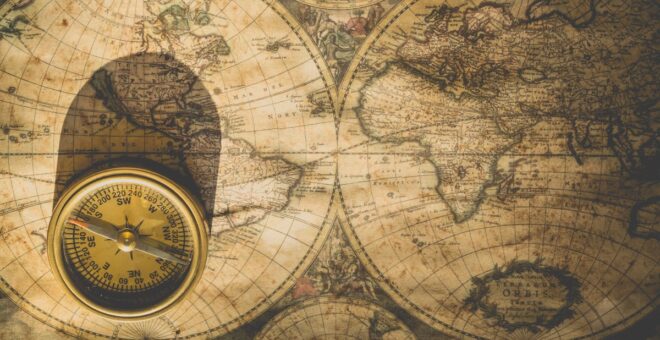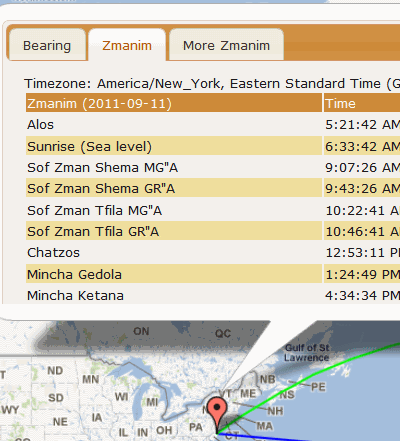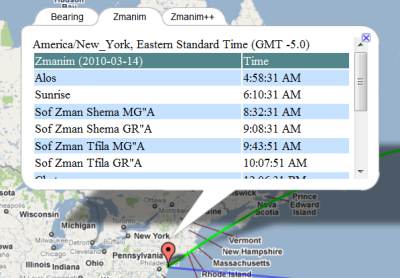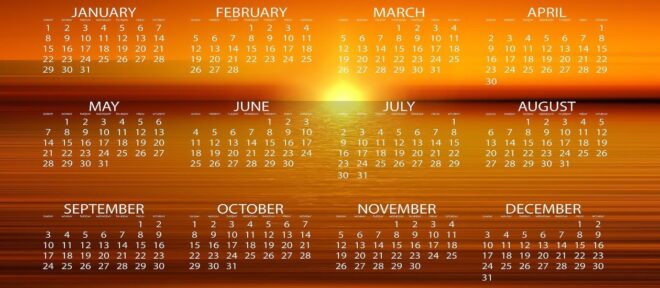 The Bearing to Yerushalayim and Zmanim Map was recently updated to version 3.0. This new release adds a number of new features to the Zmanim Map version 2.0 update released in March 2010. The main change was updating the Google Map API version from the deprecated v2 to v3. This change increases performance and adds much better support for mobile browsers. The upgrade also means that a Google Maps API key is no longer required. This makes it easy to drop it into any site without any configuration (contact me for details).
The Bearing to Yerushalayim and Zmanim Map was recently updated to version 3.0. This new release adds a number of new features to the Zmanim Map version 2.0 update released in March 2010. The main change was updating the Google Map API version from the deprecated v2 to v3. This change increases performance and adds much better support for mobile browsers. The upgrade also means that a Google Maps API key is no longer required. This makes it easy to drop it into any site without any configuration (contact me for details).  The technical notes on the original Technical Information about the Bearing to Yerushalayim Map post are still relevant, with very little having changed since the initial implementation.
The technical notes on the original Technical Information about the Bearing to Yerushalayim Map post are still relevant, with very little having changed since the initial implementation.
The following is a partial list of the new features:
- A number of additional zmanim in the More Zmanim tab, including tchilas and sof zman kiddush levana (if they occur on that day)
- A link to download a 12 month Zmanim calendar directly from the map (using the same spreadsheet used in the Zmanim Calendar Generator). Clicking on the link from the Zmanim tab will generate a calendar with most typically used zmanim, while clicking on the link in the More Zmanim tab will download the full set of zmanim. These are available as the Calendar Type option in the Zmanim Calendar Generator
- Increased use of jQuery and jQuery UI for formatting the zmanim tables to better match the site look & feel
- Refactoring to make the code more robust and slightly more maintainable
- Timezones for all of Israel now display the timezone of Asia/Jerusalem as opposed to the Asia/Gaza returned for parts of Israel by the GeoNames TimeZone web service
From a technical perspective there were a number of changes required due to updating the Google Maps API from v2 to v3. These include:
- v3 no longer supports tabbed info windows, so the tabs are now implemented using jQuery UI
- Renaming of a number of classes and functions such as GLatLng to LatLng
- A number of functions that were part of API v2 were removed in v3. One example is the removal of radians in the LatLng that had been available and was replaced by the google.maps.LatLng class. These missing functions required for the direction to Yerushalayim calculations are now supported in the Zmanim Map using prototypes
 I recently updated the map to look-up the actual timezone of the latitude and longitude selected by the user. This was implemented by doing a look-up at the
I recently updated the map to look-up the actual timezone of the latitude and longitude selected by the user. This was implemented by doing a look-up at the  I slightly updated the
I slightly updated the